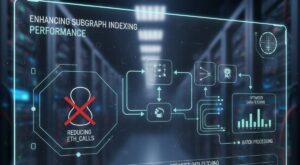The Transition between Web3 and Post-Web
A decentralized internet era known as “read, write, own” was brought about by Web3, and blockchain technology gave individuals the ability to own digital property. The Post Web goes one step further, though, allowing users to “delegate” duties to self-governing AI entities. Intention-based systems replace attention-driven platforms in this paradigm shift, which radically alters user interactions.
AI Agents’ Function in the Post-Web Era
Post Web imagines a user-centered, self-organizing internet where AI agents carry out tasks on their own. These agents function precisely and nimbly across decentralized networks, interpreting user intent. These intelligent software systems would first manage basic functions like scheduling appointments before developing to carry out intricate financial operations on behalf of consumers, according to Jamie Burke, CEO of Outlier Ventures.
Why Early Adoption Is Possible in the Middle East
The Middle East is well-positioned to adopt the Post Web due to its young, tech-savvy populace and significant investments in cutting-edge technologies. In this revolutionary age, the region’s advantages place it as a global center for innovation and development.
Web3: A Prelude to the Post-Web Era
By eliminating middlemen, encouraging peer-to-peer communication, and giving consumers more control over their data, Web3 aimed to decentralize the internet. But widespread acceptance has been hampered by its complexity. By combining Web3 infrastructure with AI developments, the Post Web solves this problem by increasing the accessibility and scalability of decentralized apps through automation and user-friendly interfaces.
The Intention Economy Transition
The “intention economy,” an ecosystem where user objectives drive interactions, takes the role of the “attention economy” on the Post Web. This new paradigm places a higher priority on using dynamic, context-driven interfaces to address actual user demands. Bypassing conventional search engines and applications, AI agents intervene on behalf of users and offer straightforward, effective answers.
Real-World Uses: A New Era of Internet Experiences
Consider organizing a family vacation. Users are overloaded with advertisements and less-than-ideal options on traditional sites. On the Post Web, on the other hand, an AI agent assesses multifaceted elements such as weather and insurance coverage for a range of activities. This guarantees customized solutions that satisfy particular consumer needs.
The “Thin Web” and cost-effectiveness
By removing pointless middlemen, maximizing resources, and matching results with user requirements, the Post Web simplifies the internet. Both buyers and sellers gain from this change, which lowers expenses while increasing productivity. Burke’s “Thin Web” approach offers different degrees of immersion depending on user contexts while reducing the clutter of the standard web.
Possibilities for Investment on the Post Web
With billions of users and assets joining the chain, the shift to the Post Web signals the start of a “Supercycle” in technology adoption. As they mirror supply and demand in the real world, digital assets will become more popular, creating opportunities for institutional and individual investors to invest through stock market indexes and exchange-traded funds.
Ten Years of Change
The Post Web is a gradual development that is anticipated to take place over the course of the next ten years. Outdated technology like search engines and app stores may become obsolete as AI agents take on more and more duties. The internet will keep evolving, redefining user experiences by combining pertinent technologies into the Post Web.
Being prepared for this change highlights the Middle East’s capacity to lead the Post Web era, spurring innovation worldwide and establishing new standards for digital transformation.




























